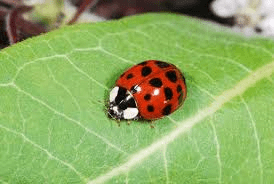Beloved garden helper or household nuisance?
In the U.S., one of the most familiar backyard insects is suddenly having a public image problem. The Wall Street Journal reports that the ladybug—long viewed as a lucky, child-friendly garden ally—is increasingly seen as a pest as certain species swarm homes, stain walls and even bite. The shift reflects how a changing climate, global trade and biological pest-control campaigns have altered which ladybird beetles dominate in fields and suburbs.
For decades, farmers and gardeners welcomed ladybugs because they devoured aphids and other crop-damaging insects. But the introduction of non-native Asian lady beetles, combined with warmer winters, has allowed more aggressive species to thrive. In autumn, they slip into cracks around windows and roofs, clustering in attics and living rooms. Homeowners complain about strong odors and yellowish stains when the beetles are crushed or disturbed, forcing pest-control professionals to step in.

Balancing ecology, pest control and nostalgia
Entomologists say the PR crisis is partly a case of mistaken identity: native ladybugs remain important allies for ecological pest management, while the invasive look-alike beetles cause most of the trouble. Still, the distinction is lost on many residents who only see swarms of spotted insects on curtains and ceilings. Companies that once sold ladybug-themed children’s toys and garden decor now face questions from customers who associate the bug with infestations, not luck.
Climate change and global shipping are also reshaping beetle populations. Milder winters mean more beetles survive the cold, while cargo flows and cross-border biological-control programs have moved species across continents. Scientists warn that heavy use of chemical sprays to get rid of unwanted beetles can backfire by killing beneficial insects and encouraging resistant pests. They urge better sealing of homes, targeted vacuuming and patience during seasonal swarms instead of blanket pesticide use.
For environmental educators, the ladybug story has become a vivid example of how a familiar symbol can change as ecosystems shift. They argue that rather than demonizing the insect, schools and communities should focus on identifying invasive species, preserving native predators and planting diverse gardens that reduce the need for harsh chemicals. The spotted beetle may yet recover its friendly reputation—but only if people learn to distinguish between the tiny ally on the leaf and the unwelcome cluster on the bedroom wall.

 TPW DESK
TPW DESK 


















